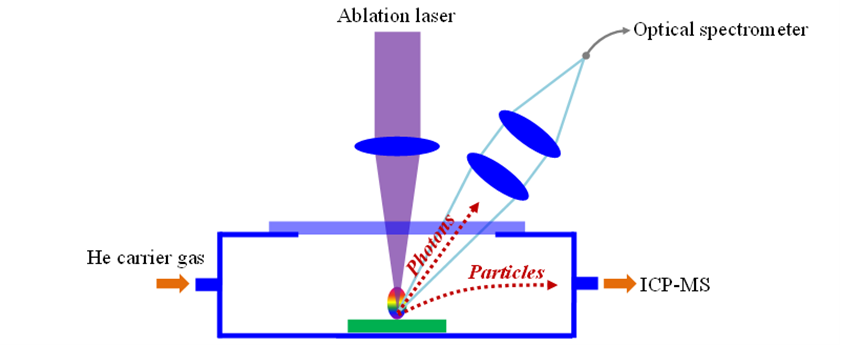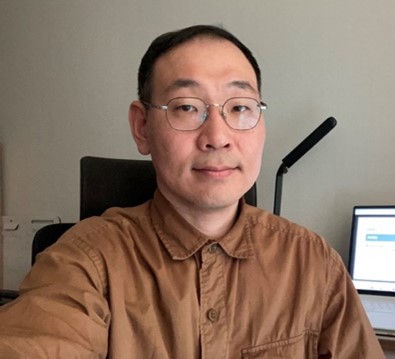Technical Webinar on LIBS (Laser Induced Breakdown Spectroscopy) for Hyphenated Analytical Techniques
Presented by
Dr. Yonghoon Lee
Department of Chemistry
Mokpo National University, South Korea
Applied Spectra, Inc. is pleased to announce our technical webinar on LIBS (Laser Induced Breakdown Spectroscopy) and LA-ICP-MS (Laser Ablation ICP-MS). Our guest presenter for this webinar is Dr. Yonghoon Lee at Mokpo National University in Mokpo, South Korea. This webinar highlights a use of LIBS as a Drpart of hyphenated techniques along with LA-ICP-MS and other spectroscopies such as reflectance and NIR to significantly enhance classification/discrimination power of food materials and biological samples for disease determination. Dr. Lee will also discuss the data fusion and modeling approaches to enhance effectiveness of discrimination with examples based on edible salts and nickel alloys. With powerful commercial LIBS and Tandem LA – LIBS instruments available (J200 and RESOlution Tandem from Applied Spectra), a wealth of chemical information can be obtained based on LIBS and LA-ICP-MS for accurate quantitative and classification analysis. This technical webinar by Dr. Lee will highlight an importance on optimizing spectroscopic data treatment, fusion, and modeling in achieving the best analytical result.

Hyphenated spectroscopy consisting of LIBS and LA-ICP-MS (Tandem LIBS and LA-ICP-MS)
Webinar Schedule
Duration:1 hr
Wednesday, July 19th, 2023 9:00 AM PDT-10:00 AM PDT Open to all: recommended for attendees in the US and EU
Webinar Schedule
Duration:1 hr
Wednesday, July 19th, 2023 5:30 PM PDT-6:30 PM PDT
(or July 20th, 2022, 9:30 to 10:30 AM Seoul/Tokyo Time) Open to all: recommended for attendees in the Asia, SE Asia, and Australia
Webinar Abstract
LIBS and Friends: LA-ICP-MS, NIR, Reflectance, and Modeling
Laser-induced breakdown spectroscopy (LIBS) is one of the plasma-based elemental analysis techniques. It detects optical emissions from laser-induced plasmas for qualitative screening of samples, quantitative analysis of specific analytes or material classification. Since LIBS emerged as a rapid, versatile analytical platform, other spectroscopic techniques have been used in combination with LIBS. For accurate LIBS analysis, an effective data analysis methodology such as multivariate data modeling is typically required.
In the first part of this presentation, a few applications of hyphenated spectroscopy will be introduced. In these applications, LIBS was put in one of the two sides of the hyphen. For accurate classification of edible salts, LIBS, focusing on elemental information, was combined with LA-ICP-MS and also with reflectance spectrometry. The two hyphenated techniques, LIBS – LA-ICP-MS (or reflectance), provided complementary information to each other. To exploit 100% discrimination capability for salts based on both data sets, the data fusion strategy appeared to be critical. The effective data fusion approach will be briefly discussed in the presentation.
| Prof. Yonghoon Lee received his PhD at KAIST in the field of high-resolution molecular spectroscopy. He worked for Natural Science Research Center at KAIST, Samsung Electronics, and Advanced Photonics Research Institute at GIST and is a Physical Chemistry Professor in Department of Chemistry at Mokpo National University since 2009. He was a visiting scientist and professor at Lawrence Berkeley National Laboratory in 2015-2016. His research interests include developing LIBS and related hyphenated techniques for analytical applications in food, metal, battery, and nuclear industries and discovering effective ways of classical modeling based on LIBS spectra. |
Related publications
Y. Lee,* S.-H. Nam, K.-S. Ham, J. Gonzalez, D. Oropeza, D. Quarles Jr., J. Yoo, R. E. Russo, “Multivariate classification of edible salts: Simultaneous laser-induced breakdown spectroscopy and laser-ablation inductively coupled plasma mass spectrometry analysis”, Spectrochimica Acta Part B 118 (2016) 102-111.
J. Park, S. Kumar, S.-H. Nam, S.-H. Han, Y. Lee,* “Combination of diffuse optical reflectance spectroscopy and laser-induced breakdown spectroscopy for accurate classification of edible salts”, Spectrochimica Acta Part B, 179 (2021) 106088.
C. Eum, E. Jang, H. Kim, S.-H. Nam, Y. Lee*, D. Choi, H. Chung*, “Combination of LIBS-based elemental analysis and near-infrared molecular fingerprinting of bile juice to enhance identification of gallbladder cancer”, Analysts 147 (2022) 3193-3200.
S. Jeong, D. Seol, H. Kim, Y. Lee, S.-H. Nam*, J.-M. An, H. Chung*, “Cooperative combination of LIBS-based elemental analysis and near-infrared molecular fingerprinting for enhanced discrimination of geographical origin of soybean paste”, Food Chemistry 399 (2023) 133956.
H. Choi, H. Kim, S.-H. Han, S. Kim, S. Jung,* S.-H. Nam,* Y. Lee,* “Feasibility of a Low-Power Low-Resolution Laser-Induced Breakdown Spectroscopy Instrument for Analysis of Nickel Alloys: Quantification of the major alloying elements and classification of nickel alloys”, Applied Spectroscopy 77(4) (2023) 371-381.
J. Park, S. Kumar, S.-H. Han, V. K. Singh, S.-H. Nam,* Y. Lee,* “Two-step partial least squares-discriminant analysis modeling for accurate classification of edible sea salt products using laser-induced breakdown spectroscopy”, Applied Spectroscopy 76(9) (2022) 1042-1050.





